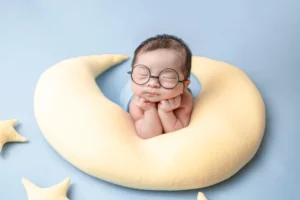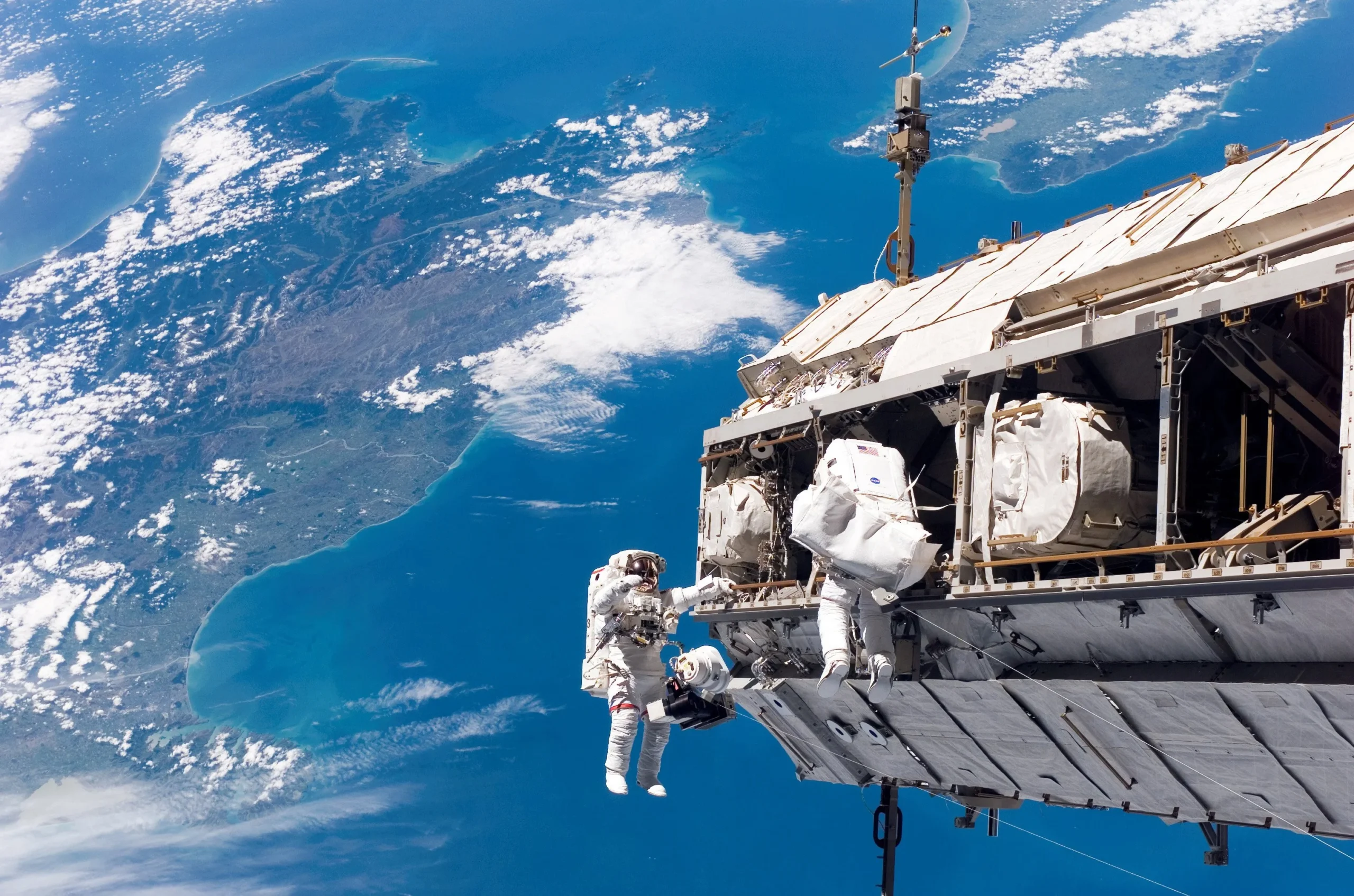Sleep Deprivation and Celestial Challenges: Astronauts’ Resilience

Sleep deprivation is a common challenge faced by astronauts aboard the International Space Station (ISS). The unique environment of the space station, with its lack of gravity and constant exposure to sunlight, can disrupt the natural sleep-wake cycle of the astronauts. As a result, NASA has implemented various strategies to help astronauts regulate their nap patterns and ensure they get enough rest to perform their duties effectively.
One of the key strategies employed by NASA is the use of artificial lighting. The space station is equipped with specialized lighting systems that mimic the natural light patterns on Earth. By adjusting the intensity and color of the lights, NASA can simulate day and night cycles, helping astronauts maintain a sense of normalcy in their sleep routines. This artificial lighting is carefully calibrated to ensure that astronauts receive the right amount of light exposure at the appropriate times, promoting wakefulness during the day and facilitating sleep at night.
In addition to artificial lighting, NASA also provides astronauts with Slumber aids to help them fall asleep and stay asleep in the unique environment of the space station. These napping aids can range from simple eye masks and earplugs to more advanced technologies such as noise-canceling headphones and sleep-inducing medications. The use of these aids is carefully monitored by NASA’s medical team to ensure the astronauts’ safety and well-being.
Another important aspect of regulating sleep patterns on the ISS is the implementation of a strict schedule. Astronauts are given specific sleep and wake times to follow, regardless of the time of day or night outside the space station. This helps to establish a routine and ensure that astronauts are getting enough sleep on a regular basis. However, adjusting to this rigid schedule can be challenging, especially during transitions between day and night shifts, when astronauts may experience jet lag-like symptoms.
Furthermore, NASA has also conducted extensive research on the effects of microgravity on sleep quality and duration. Studies have shown that astronauts often experience shorter sleep durations and poorer sleep quality compared to their counterparts on Earth. This is believed to be due to a combination of factors, including the absence of gravity, the constant noise and vibrations of the space station, and the psychological stress of living and working in a confined environment. To mitigate these effects, NASA continuously explores new technologies and techniques to improve sleep conditions for astronauts.
In conclusion, maintaining proper sleep patterns aboard the International Space Station is crucial for the health and well-being of astronauts. NASA’s strategies, such as the use of artificial lighting, sleep aids, strict schedules, and ongoing research, aim to ensure that astronauts can get the rest they need to perform their duties effectively while living and working in the unique environment of space.
Understanding the Challenge of sleep deprivation
The Earth’s rotation cycle provides a natural rhythm for sleep-wake cycles, but this rhythm is disrupted for astronauts aboard the ISS. The absence of a consistent day-night cycle poses a challenge to their circadian rhythms, potentially leading to sleep disturbances and fatigue.
Maintaining Consistency
To mitigate the effects of disrupted circadian rhythms, the ISS operates on Greenwich Mean Time (GMT). This standard timekeeping helps astronauts maintain a consistent schedule for activities, including sleep. By adhering to a predetermined timezone, astronauts establish routines for waking up and going to bed, providing structure to their daily lives despite the unconventional environment.
In addition to using GMT as a reference, the ISS also employs various technologies to simulate day and night cycles. Special lighting systems are installed throughout the space station, which can be adjusted to mimic the intensity and color temperature of natural sunlight. These artificial lighting conditions help regulate astronauts’ internal body clocks by providing cues for wakefulness and sleep.
Furthermore, the ISS is equipped with soundproof sleeping quarters to minimize external disturbances that could disrupt astronauts’ slumber . The sleeping quarters are designed to provide a comfortable and quiet environment, allowing astronauts to rest without distractions. Additionally, astronauts are provided with earplugs and eye masks to further enhance their sleep quality and promote a more restful slumber.
Despite these measures, the absence of gravity in space presents its own challenges to sleep. Astronauts have reported feeling a sensation of floating while they sleep, which can be disorienting and may affect the quality of their rest. To counteract this, sleeping bags are used to keep astronauts in place and provide a sense of grounding while they sleep.
Overall, the unique environment of the ISS poses significant challenges to maintaining healthy sleep-wake cycles for astronauts. However, through the implementation of GMT as a standard timekeeping system, the use of artificial lighting to simulate day and night, the provision of soundproof sleeping quarters, and the use of sleeping bags to counteract the absence of gravity, astronauts are able to establish consistent sleep routines and mitigate the effects of disrupted circadian rhythms.
During the HUGINN mission, ESA astronaut Andreas Mogensen conducted a series of experiments to study the impact of space travel on sleep patterns. One of these experiments, called Circadian Light, focused on understanding how the absence of natural light cycles affects an astronaut’s circadian rhythm. In space, astronauts are exposed to artificial lighting that mimics the 24-hour day on Earth, but without the natural cues provided by sunlight. The study aimed to determine how this altered light environment affects an astronaut’s sleep quality and timing.
Another experiment conducted by Mogensen during the HUGINN mission was Sleep in Orbit. This study aimed to investigate how astronauts adapt to sleeping in microgravity conditions. In space, astronauts sleep in small cabins, strapped to the walls or ceilings to prevent them from floating around. The absence of gravity can affect sleep quality and duration, as well as the positioning of the body during sleep. By collecting data on sleep patterns, duration, and quality, this experiment provides valuable insights into optimizing sleep conditions for astronauts during long-duration missions.
The findings from these experiments are crucial for ensuring the well-being and performance of astronauts during extended space missions. Sleep plays a vital role in maintaining physical and mental health, and understanding how it is affected by the unique challenges of space travel is essential for astronauts’ overall well-being. By studying sleep patterns in space, scientists can develop strategies to improve sleep quality and duration, ultimately enhancing the overall health and performance of astronauts during their missions.
Innovative Approaches
The ESA’s post on Instagram highlights the innovative approaches taken to address the sleep challenges faced by astronauts. By sharing glimpses of Mogensen conducting experiments aboard the ISS, the ESA invites the audience to appreciate the complexities of life in space and the dedication of astronauts to advancing scientific knowledge.
The sleep challenges faced by astronauts in space are unique and require innovative solutions. In the microgravity environment of the International Space Station (ISS), astronauts often struggle to get a good night’s sleep due to a variety of factors. These include the lack of a natural day-night cycle, the constant noise and vibrations from the equipment, and the discomfort of sleeping in a confined space.
To address these challenges, the ESA has been actively researching and developing new approaches to improve the sleep quality of astronauts. One such approach is the use of specialized sleep pods that provide a more comfortable and conducive sleeping environment. These pods are designed to minimize the impact of external factors such as noise and vibrations, allowing astronauts to have a restful sleep.
In addition to the physical environment, the ESA also focuses on the psychological aspect of sleep in space. They have implemented innovative techniques such as virtual reality (VR) relaxation exercises to help astronauts unwind and relax before bedtime. These exercises simulate calming environments and help astronauts transition into a more peaceful state of mind, promoting better sleep.
Furthermore, the ESA recognizes the importance of understanding the impact of sleep deprivation on cognitive performance in space. They have conducted extensive research on the effects of sleep deprivation and have developed personalized sleep schedules for astronauts to optimize their performance. These schedules take into account individual sleep patterns and preferences, ensuring that astronauts get the right amount of restorative sleep.
The ESA’s commitment to addressing the sleep challenges faced by astronauts is evident in their collaboration with experts from various fields. They work closely with sleep scientists, psychologists, and engineers to develop cutting-edge technologies and techniques that enhance sleep quality in space. This interdisciplinary approach allows for a comprehensive understanding of the complex nature of sleep in microgravity and enables the ESA to implement effective solutions.
By sharing glimpses of Danish astronaut Andreas Mogensen conducting sleep experiments aboard the ISS, the ESA aims to raise awareness about the importance of sleep in space and the efforts being made to improve it. These experiments involve monitoring sleep patterns, brain activity, and other physiological parameters to gather valuable data that can inform future sleep interventions.
In conclusion, the ESA’s post on Instagram not only highlights the innovative approaches taken to address the sleep challenges faced by astronauts but also showcases the dedication and commitment of astronauts to advancing scientific knowledge. Through their research and collaboration with experts, the ESA is paving the way for improved sleep quality in space, ensuring the well-being and performance of astronauts during their missions.
Many users expressed their awe and admiration for the astronauts, highlighting their courage and dedication to pushing the boundaries of human exploration. Some commented on the incredible advancements in technology that have made it possible for humans to live and work in space, marveling at the complex systems and engineering feats required to sustain life in such a harsh environment.
Others shared their own dreams of becoming astronauts, inspired by the images and stories shared by these brave individuals. They expressed their desire to contribute to the scientific community and be a part of the ongoing quest for knowledge beyond our planet.
Additionally, the post sparked discussions about the importance of space exploration and its potential benefits for humanity. Many users pointed out that space missions not only expand our understanding of the universe but also drive innovation and technological advancements that have practical applications here on Earth.
Some users mentioned the role of space agencies and governments in funding and supporting these missions, emphasizing the need for continued investment in space exploration. They argued that the knowledge gained from exploring space can have far-reaching implications for various fields, including medicine, climate science, and telecommunications.
Overall, the public response to the Instagram post demonstrated a deep fascination with space exploration and a recognition of its significance in expanding our horizons and pushing the boundaries of human achievement. It highlighted the universal human desire to explore the unknown, to seek answers to fundamental questions, and to push the limits of what is possible.

